1 comment
Leave a comment
Translation missing: en.blogs.comments.discription
1000 Calories Diet Plan Indian: 7‑Day Menu for Effective Weight Loss
Save time with this 1000 calories diet plan indian guide. A complete, structured 7‑day menu that’s light, satisfying, and easy to cook.
With obesity rates rising in India — nearly 135 million adults are overweight according to the ICMR — more people are turning to structured diet plans to cut down calories and shed those extra pounds.
But here’s the thing: eating just 1000 calories a day isn’t a casual decision, it’s a very low-calorie diet that works only when done the right way. The good news? You don’t have to figure it out alone.
In this guide, you’ll get a 7-day structured menu that’s simple, tasty, and actually doable. And yes, we’ll also talk about the risks, benefits, and those little details most blogs skip over.
Ready to see if this plan fits your weight loss journey (without feeling like you’re surviving on air)? Let’s dive in.
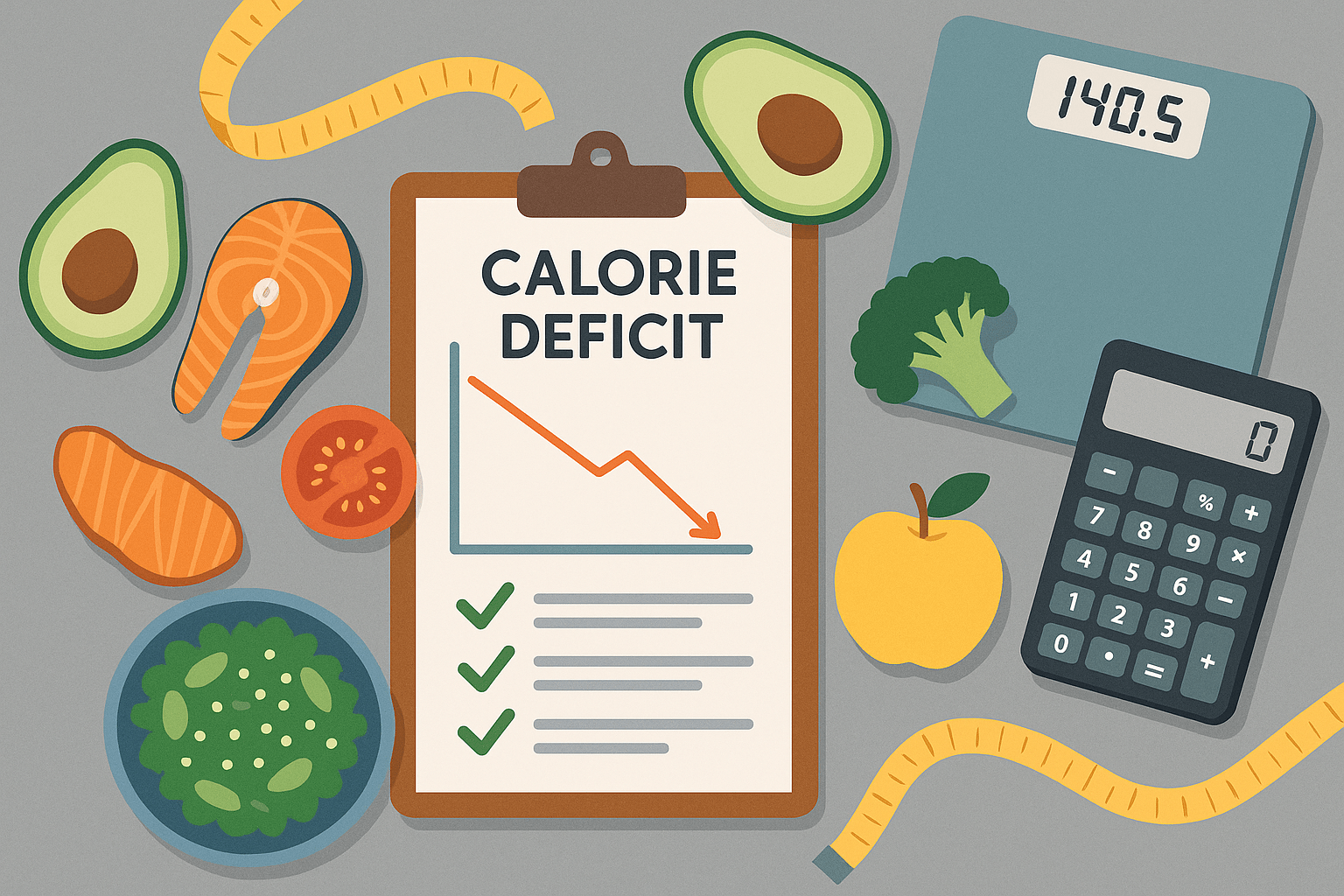
Consuming fewer calories than your body expends results in a calorie deficit. That’s how fat loss happens. A 1000 calories diet plan Indian works by limiting your daily caloric intake so your body uses stored fat for energy.
For example, if your body needs 1,800 calories but you eat only 1,000, you create an 800-calorie deficit. Over time, this helps you lose weight.
Studies show that a 500–1,000 calorie deficit per day can lead to safe weight loss of 0.5 to 1 kg per week (CDC, 2023).
But going too low, without medical supervision, may cause nutrient deficiencies or muscle loss.
The key is balance: focus on nutrient dense foods like dal, vegetables, brown rice, and lean proteins.
Weight loss is simple in theory — fewer calories in, more calories out. The challenge is doing it in a way that protects your health.” — Harvard Health Publishing
“Don’t worry about counting every calorie. Balance Bite’s smart tools track your daily caloric intake and suggest meal swaps so you stay in deficit without the guesswork.”
Who Might Consider a 1000 Calorie Diet Plan
Short-Term Weight Loss Goals: If you want to lose weight quickly, this plan can help for a short period. According to the CDC, creating a 500–1000 calorie deficit per day can lead to safe fat loss of about 0.5 to 1 kg per week. But remember, quick results don’t always mean sustainable weight loss.
Doctor-Supervised Programs: Doctors sometimes recommend a very low calorie diet for people with obesity or metabolic disorders. In these cases, strict medical supervision is essential to prevent nutrient deficiencies and muscle loss.
Special Cases: Before certain surgeries, like bariatric surgery, doctors may suggest a structured meal plan with only 1000 calories to lower body fat and improve recovery chances.
Strict Monitoring: This diet works only when your food is rich in essential nutrients. Regular check-ins with a healthcare professional are key to avoid risks like hair loss, fatigue, or health risks related to poor nutrition.
Who Should NOT Try a 1000 Calorie Diet Plan
Children, Teenagers, and Pregnant Women: Their bodies need more calories for growth, energy, and balanced nutrition. Eating too little can harm long-term overall health.
Active Adults & Athletes: If you train or play sports, 1000 calories is too low. You risk losing muscle mass and strength instead of burning stored fat.
People with Medical Conditions: Anyone with heart disease, blood sugar issues, or chronic diseases should stay away. A drastic caloric restriction can make these conditions worse.
Anyone Without Guidance: Trying this plan alone is risky. Without expert help, you may eat the wrong foods, rely on processed foods or artificial sweeteners, and end up with poor weight management results.
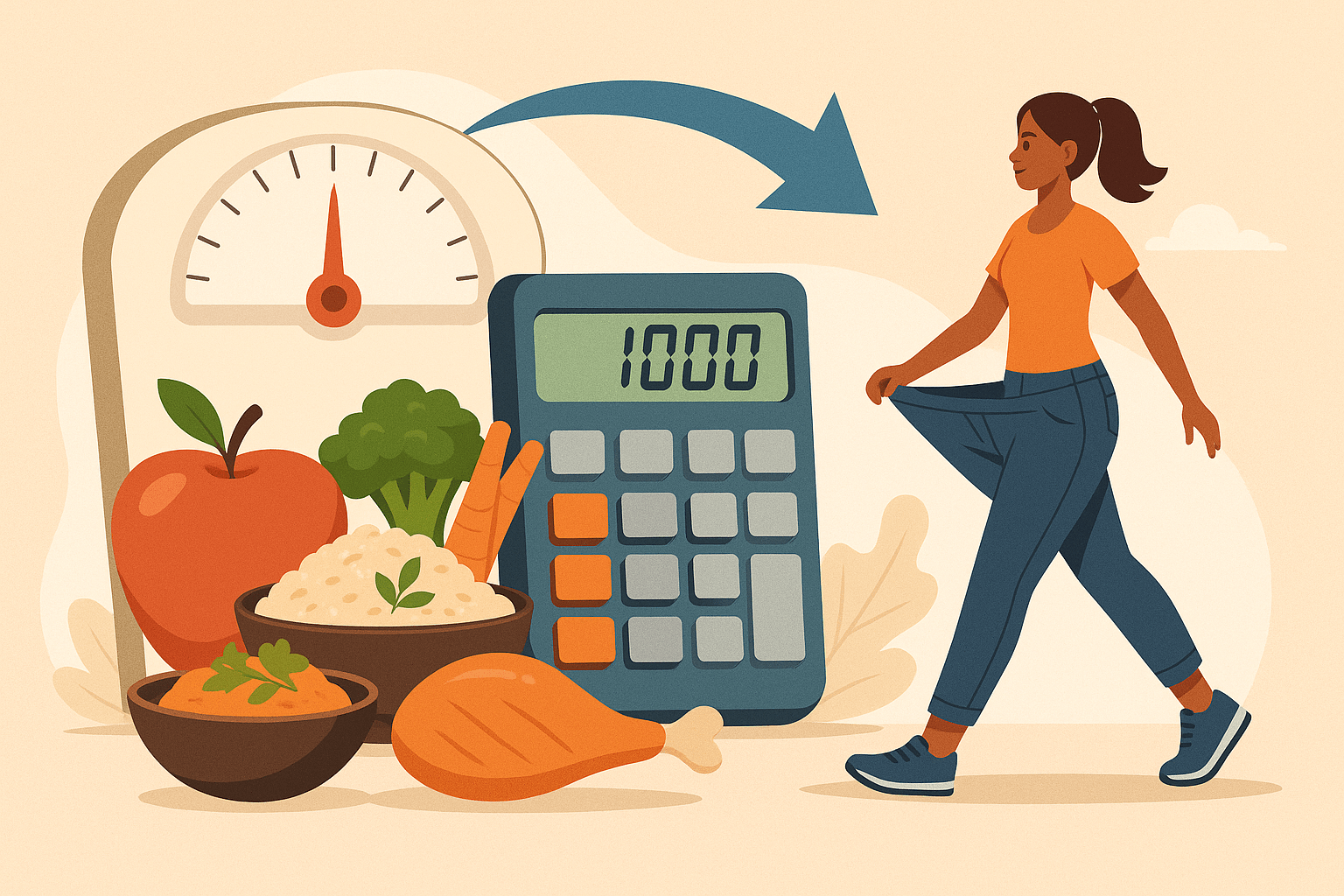
A 1000 calories diet plan Indian works by creating a calorie deficit. That means you eat fewer calories than your body burns each day. When this occurs, your body taps into stored fat for energy, resulting in fat loss.
For example, if your body needs 1,800 calories but you only eat 1,000, you create an 800-calorie gap. Over time, that gap helps you lose weight.
Why It Works
A smaller daily caloric intake forces your body to burn fat.
Eating nutrient dense foods like dal, vegetables, and brown rice keeps you full with fewer calories.
Adding lean proteins prevents muscle loss and supports long-term weight management.
Things to Keep in Mind
Experts recommend a 500–1000 calorie deficit per day for safe results (CDC, 2023).
Too much restriction can cause nutrient deficiencies, fatigue, or even hair loss if not done carefully.
Always follow this plan under medical supervision to avoid health risks.
“Want a diet plan that’s not just theory but backed by real nutritionists? Try Balance Bite’s structured Indian diet programs designed for busy people like you. Light, tasty, and easy to follow.”
| Aspect | Fat Loss | Weight Loss |
|---|---|---|
| Definition | Reduction in body fat percentage. | Overall drop in body weight (fat, muscle, water, etc.). |
| Focus | Maintaining muscle mass while losing fat. | Losing numbers on the scale, regardless of source. |
| Health Impact | Improves metabolism, fitness, and body composition. | May lead to muscle loss, slower metabolism, and weakness. |
| Sustainability | Long-term and healthier approach. | Often short-term and harder to sustain. |
| Best Approach | Balanced diet + strength training + cardio. | Extreme dieting or excessive cardio. |
| Outcome | Toned, leaner, and stronger body. | Lower scale weight but not necessarily healthier. |
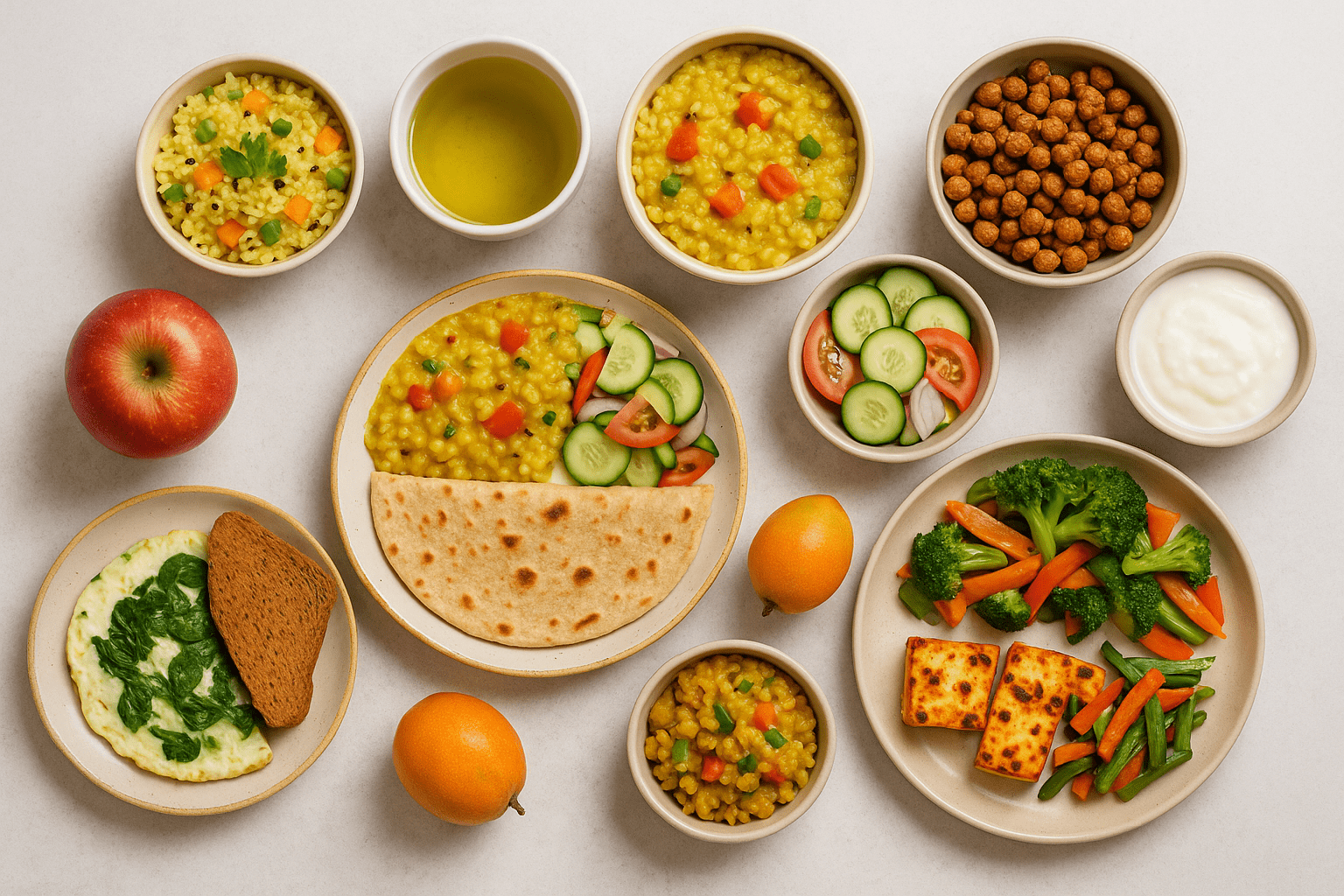
Day 1 begins with light meals that keep you full without heavy calories.
Breakfast: 1 small bowl vegetable upma (150 g) + 1 cup green tea (220 cal)
Mid-Morning: 1 apple (80 cal)
Lunch: 1 phulka (50 g) + 1 cup dal (150 ml) + cucumber salad (300 cal)
Snack: Handful roasted chana (30 g) (100 cal)
Dinner: 1 small bowl vegetable khichdi (150 g) + curd (50 g) (300 cal)
This plan uses nutrient dense foods like dal and khichdi. They aid digestion, support weight loss efforts, and avoid empty calories from fried foods.
Day 2 adds more protein to protect muscle mass and support fat loss.
Breakfast: 2 egg white omelet with spinach + 1 slice brown bread (200 cal)
Mid-Morning: 1 guava (60 cal)
Lunch: 1 chapati (50 g) + 1 cup chole (150 ml, less oil) + salad (320 cal)
Snack: 1 cup buttermilk (50 cal)
Dinner: Grilled paneer tikka (80 g) + sautéed veggies (200 g) (370 cal)
Adding lean proteins like eggs and paneer helps prevent muscle loss while you are in a calorie deficit. Paneer tikka and chole also make the diet feel satisfying, so you don’t feel deprived.
Day 3 is about keeping things vegetarian and easy to digest.
Breakfast: Poha with peas & peanuts (150 g, light oil) (220 cal)
Mid-Morning: 1 orange (70 cal)
Lunch: 1 chapati + 1 small bowl rajma curry + salad (320 cal)
Snack: 1 cup green tea + 2 Marie biscuits (80 cal)
Dinner: 1 bowl vegetable soup + ½ cup brown rice with stir-fry veggies (300 cal)
This plan gives you high fiber foods like brown rice and rajma to keep you full longer. Rajma is also a good source of lean proteins for muscle maintenance. Adding green tea supports digestion and may help boost metabolism.
This day focuses on light South Indian meals that are low in calories but rich in flavor.
Breakfast: 2 idlis + sambar (150 ml) + chutney (200 cal)
Mid-Morning: 1 small banana (90 cal)
Lunch: 1 chapati + 1 cup sambar with veggies + salad (320 cal)
Snack: 1 cup herbal tea + 10 almonds (100 cal)
Dinner: Upma with vegetables (150 g) + curd (50 g) (290 cal)
Idlis and upma are steamed, making them a better choice than fried foods. Sambar with vegetables adds fiber and keeps your blood sugar stable. Almonds bring in healthy fats, while curd provides probiotics for better digestion.
This day focuses on vegetarian foods that are rich in protein and fiber.
Breakfast: Sprouts salad with tomato, onion, lemon (150 g) (200 cal)
Mid-Morning: 1 pear (80 cal)
Lunch: 1 chapati + palak paneer (100 g, light oil) + salad (320 cal)
Snack: 1 cup buttermilk (50 cal)
Dinner: Vegetable pulao (150 g) + raita (150 ml) (350 cal)
Sprouts and paneer provide lean proteins that help prevent muscle loss during calorie restriction. Palak adds iron and fiber, while buttermilk aids digestion. Vegetable pulao is filling but still fits into a low calorie diet.
If you prefer non-vegetarian meals, Day 6 adds eggs, chicken, and fish to the plan.
Breakfast: 2 boiled eggs + 1 slice whole wheat bread (200 cal)
Mid-Morning: 1 apple (80 cal)
Lunch: 1 chapati + chicken curry (100 g, low oil) + cucumber salad (330 cal)
Snack: 1 cup green tea + roasted makhana (20 g) (100 cal)
Dinner: Fish curry (100 g) + sautéed spinach + ½ cup rice (280 cal)
Eggs and chicken supply high-quality protein for muscle maintenance. Fish is rich in healthy fats that support heart health. Pairing these with vegetables and salads helps maintain balanced nutrition while keeping calories under control.
Day 7 keeps things light to give your body a small reset.
Breakfast: 1 small bowl oats porridge with skim milk + chia seeds (200 cal)
Mid-Morning: 1 orange (70 cal)
Lunch: 1 chapati + vegetable curry (150 g) + dal soup (150 ml) (320 cal)
Snack: 1 cup green tea + handful roasted peanuts (100 cal)
Dinner: Vegetable clear soup + grilled paneer (80 g) (300 cal)
Oats and chia seeds give you high fiber foods that keep you full. Dal soup provides protein while staying low in calories. Paneer at dinner adds lean proteins for muscle maintenance. Green tea helps digestion and may support fat loss.
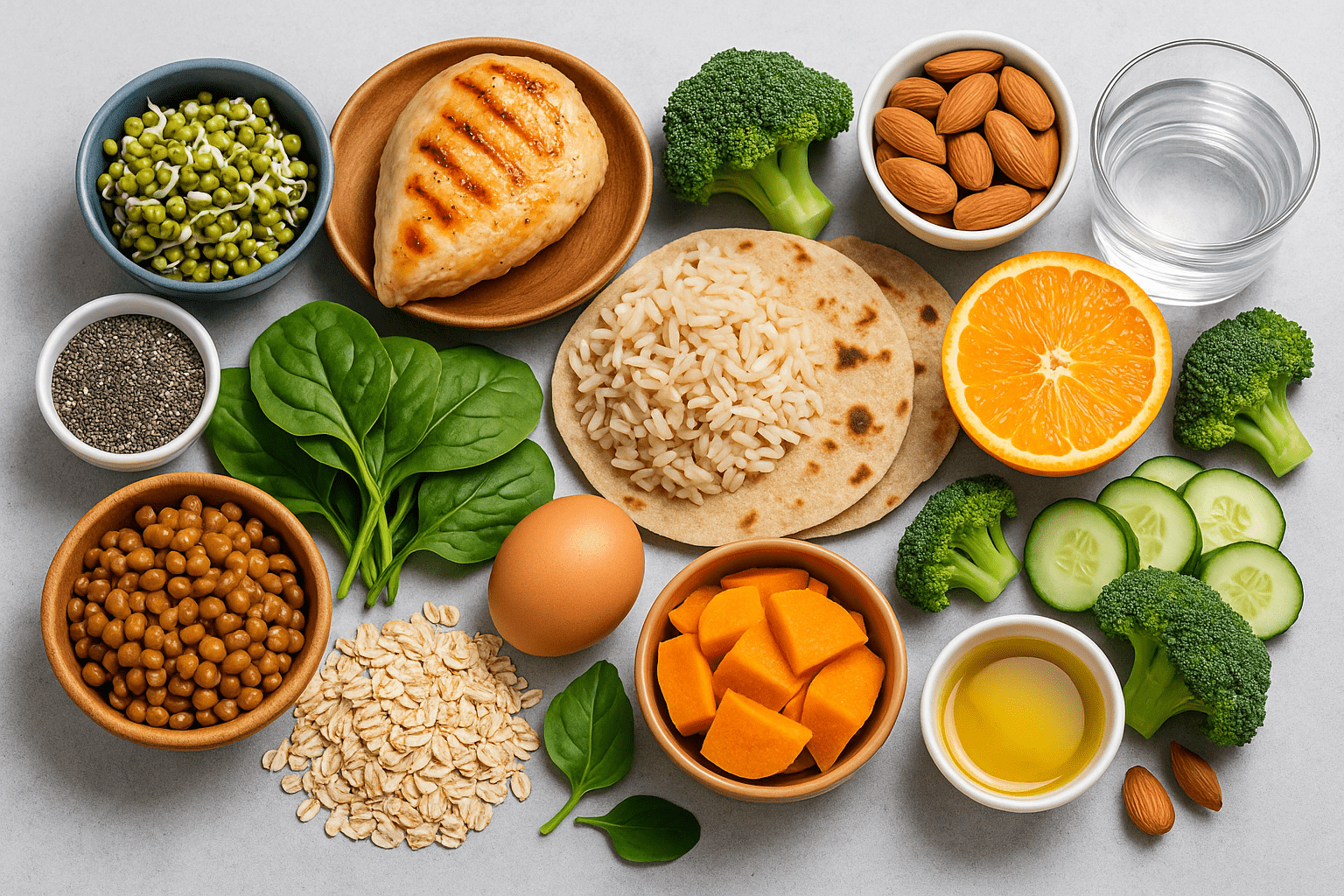
Protein for Muscle Maintenance & Fat Loss: Protein protects your muscle mass when you eat fewer calories. It also helps burn more calories during digestion. Best sources: sprouts, paneer, chicken, fish, and lentils.
Fiber for Portion Control & Digestion: Fiber keeps you full longer and reduces cravings. It also improves blood sugar control and supports digestion. Add brown rice, oats, beans, and high fiber vegetables.
Healthy Fats for Hormone Balance: Your body needs fats for hormones and overall health. Choose healthy fats like almonds, walnuts, and olive oil. Avoid unhealthy fats from fried foods or oily snacks.
Vitamins & Minerals to Prevent Deficiencies: Without these, your weight loss journey may cause fatigue or weakness. Focus on iron, calcium, vitamin D, and B12. Sources: leafy greens, milk, curd, eggs, and fruits.
Hydration for Metabolism & Energy: Water, green tea, and herbal teas keep metabolism active. Avoid sugary drinks or fruit juices with added sugars. Staying hydrated also helps with fat breakdown.
Carbohydrates for Balanced Nutrition: Carbs fuel your brain and muscles. Choose whole grains and nutrient dense foods like chapati, quinoa, and millets. Skip processed foods that only add empty calories.
A 1000 calories diet plan Indian can help with weight loss, but it may also cause side effects like hair loss. This happens when your body does not get enough protein, iron, or essential nutrients. Very low calorie diets force your body to focus on survival, not hair growth.
Lack of protein → weak hair roots.
Nutrient deficiencies → hair thinning and breakage.
Crash diets → higher stress on your body.
According to the American Academy of Dermatology, sudden calorie restriction is a common cause of temporary hair shedding.
The fix: Include lean proteins, healthy fats, and nutrient dense foods in your diet, even while staying within calorie limits. Always follow such diets under medical supervision to protect your health.
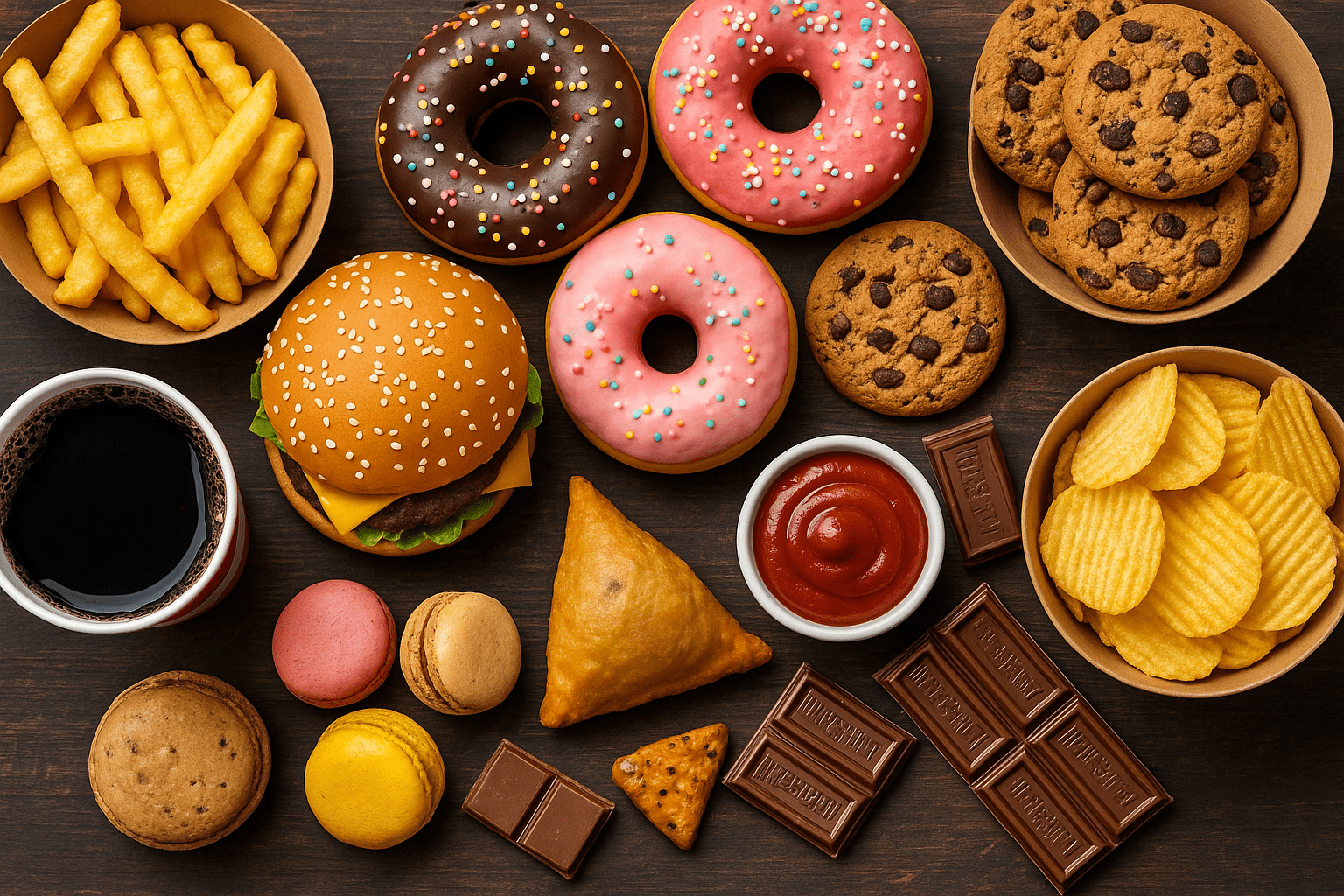
Samosas, pakoras, and potato fries are tasty but full of unhealthy fats. These add a lot of empty calories without giving you essential nutrients. Fried foods also increase risks of heart disease and slow down fat loss.
Choose roasted snacks like makhana or chana instead.
Soft drinks, packaged juices, and even sweetened teas are high in added sugars. They spike your blood sugar and add extra pounds quickly. A single can of soda can take up one-third of your daily calories.
Pick herbal teas, green tea, or lemon water for hydration and better metabolism.
Sauces, mayonnaise, and creamy salad dressings hide saturated fats and sugar. Even one spoonful can add 50–100 calories, making it hard to stay in a calorie deficit. Regular use may lead to weight gain instead of weight loss efforts.
Use lighter options like lemon, curd-based dips, or homemade chutneys.
Chips, cookies, and instant noodles may feel convenient but are high in unhealthy fats and added sugars. They give you empty calories without providing essential nutrients.
Studies show that diets heavy in processed foods increase risks of chronic diseases and poor weight management.
Better choice: roasted peanuts, makhana, or fresh fruit.
Cakes, pastries, and Indian sweets like gulab jamun pack too many calories in small portions. They spike blood sugar, add extra pounds, and leave you craving more. Even “low-fat” versions can still be loaded with added sugars.
Swap with Greek yogurt with chia seeds or a small piece of dark chocolate if you need a treat.
Many people turn to artificial sweeteners in diet sodas or sugar-free desserts. Research shows they may confuse your body’s hunger signals and harm long-term weight management. Some studies link them to metabolic disorders and poor gut health.
Safer options: natural sweeteners like stevia, or simply train your taste buds to enjoy less sugar.
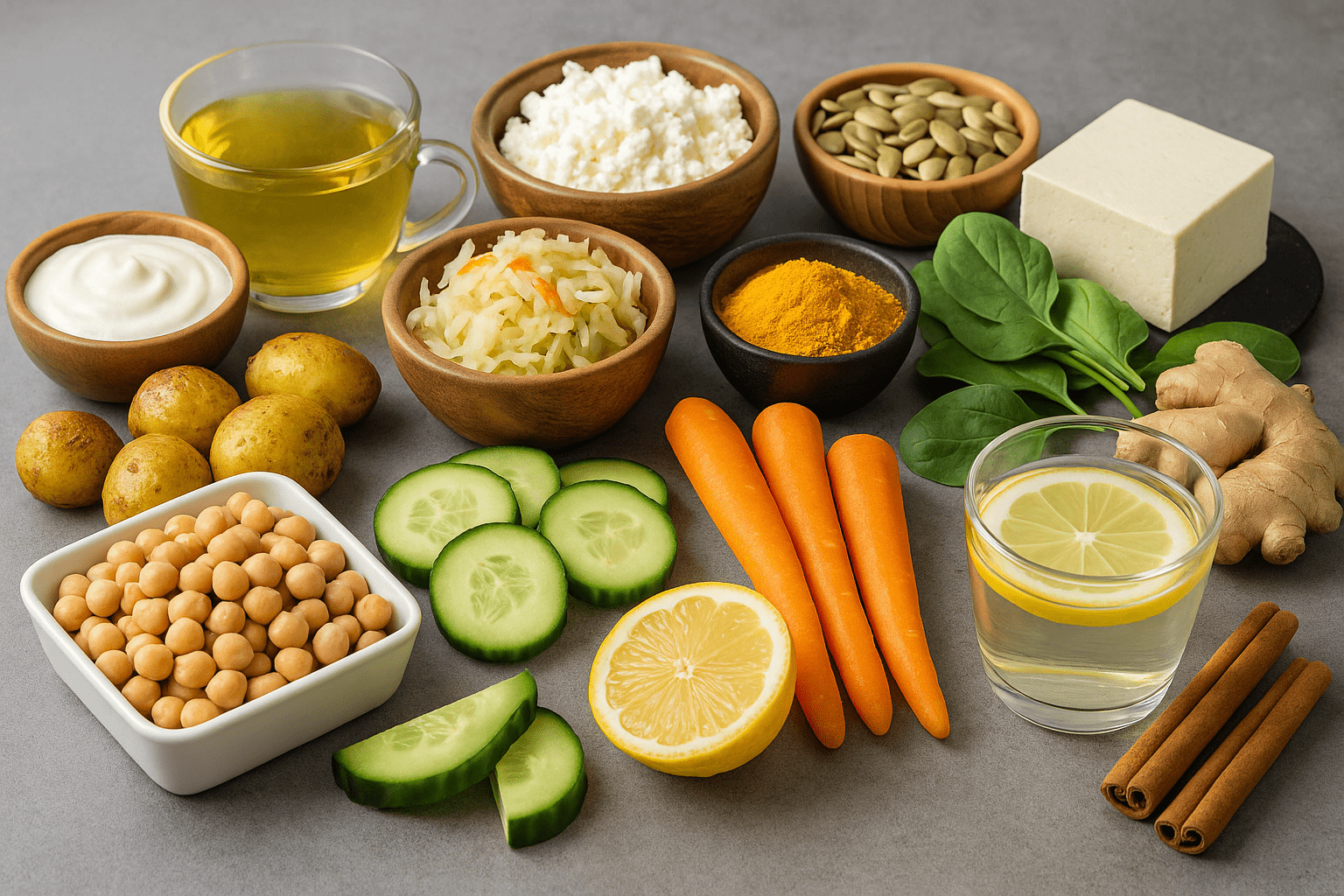
Green Tea & Herbal Teas: Green tea contains antioxidants that help with fat loss and support weight management. Herbal teas like ginger or chamomile improve digestion and reduce bloating. A study in The American Journal of Clinical Nutrition found that green tea may slightly increase calorie burn during the day.
Probiotic Foods: Foods like curd, buttermilk, and homemade yogurt add healthy bacteria to your gut. They improve digestion and support nutrient absorption. A healthy gut is linked to better overall health and fewer cravings.
Lean Proteins: Paneer, chicken, eggs, and sprouts are rich in protein. Protein requires more energy to digest, which can boost metabolism. It also helps prevent muscle loss when you are in a calorie deficit.
Lemon Water & Detox Drinks: A glass of lemon water in the morning keeps you hydrated. It supports digestion and may reduce added sugars from packaged juices. Low-calorie detox drinks are a better choice than sugary drinks.
Spices that Fire Up Metabolism: Turmeric, cinnamon, and black pepper improve digestion and may increase fat burning slightly. These spices are part of everyday Indian cooking, so they’re easy to add.
Raw Vegetables & Salads: Cucumbers, carrots, and leafy greens give you high fiber foods. Fiber keeps you full and controls blood sugar levels. Salads are nutrient dense but low in calories, making them perfect for a low calorie diet.
Fermented Pickles (Homemade): Homemade fermented pickles help build gut health. They add natural probiotics without the high salt and oil found in packaged versions. A small portion can make your meals tastier while supporting digestion.
Slowly Increase Calorie Intake: Don’t jump from 1000 calories straight to your old habits. Add 100–200 calories at a time, focusing on nutrient dense foods. This prevents quick weight gain and supports sustainable weight loss.
Stick to Portion Control: Eating more than you need, even healthy food, can stop progress. Use smaller plates and measure servings. Portion control helps balance daily caloric intake without feeling deprived.
Prioritize Nutrient Dense Foods: Choose foods rich in vitamins, minerals, and lean proteins. Avoid processed foods, fried foods, or sugary drinks that add empty calories. Balanced meals improve overall health and energy.
Eat at Regular Intervals: Skipping meals can lead to overeating later. Eat small, balanced meals every 3–4 hours. This keeps blood sugar stable and supports steady fat loss.
Don’t Fear Healthy Snacks: Smart snacks keep cravings under control. Try roasted chana, nuts, or Greek yogurt with chia seeds. They add protein and fiber without high calorie condiments.
Focus on Long-Term Health, Not Just the Scale: Weight management is not about short-term numbers. Build habits like walking daily, drinking water, and getting enough sleep. Expert Note: “Sustainable weight loss is about lifestyle, not crash diets.” — Harvard Health Publishing
Yes, a 1000 calories diet plan Indian can lead to quick results because you are eating far fewer calories than your body needs.
According to the CDC, a 500–1000 calorie deficit per day can help you lose 0.5 to 1 kg per week. But quick weight loss may not be sustainable if you return to old food habits.
Eating too few calories may cause nutrient deficiencies, weakness, and even hair loss. Long-term use without guidance can also affect your metabolism and lead to muscle loss.
Very low-calorie diets should only be used for short periods and with medical supervision.
It can support fat loss, but only if you include enough lean proteins like paneer, chicken, or sprouts. Without protein, your body may break down muscle mass instead of just stored fat.
Adding strength exercises can also help protect your muscles.
Absolutely. A 1000 calories diet plan Indian is not for everyone. Doctors often recommend it only for short-term goals or special cases.
Harvard Health Publishing notes that very low-calorie diets are safe only when supervised by a healthcare professional.
A 1000 calories diet plan Indian can help you lose weight fast, but it is not for everyone. This type of diet plan creates a sharp cut in your calorie intake, which is why results often show as rapid weight loss.
Still, it must be done carefully. Skipping nutritional needs like protein, iron, and vitamins can harm your body and even raise risks of metabolic diseases.
If you try this diet, include variety. A vegetarian diet plan can use dal, sprouts, and paneer for protein. Non-vegetarians can add lean meats like chicken or fish to protect muscles. The goal is to lose fat, not strength.
Use a 1000 calorie diet plan only as a short tool in your weight loss journey. For long-term success, focus on balanced eating, portion control, and habits you can follow for life.
“Crash diets don’t work long-term, but sustainable habits do. Join Balance Bite today and get customized Indian diet plans that fit your lifestyle—not just your calorie count.”
Translation missing: en.blogs.comments.discription
Wishlist is empty.
Nice blog, really helpful